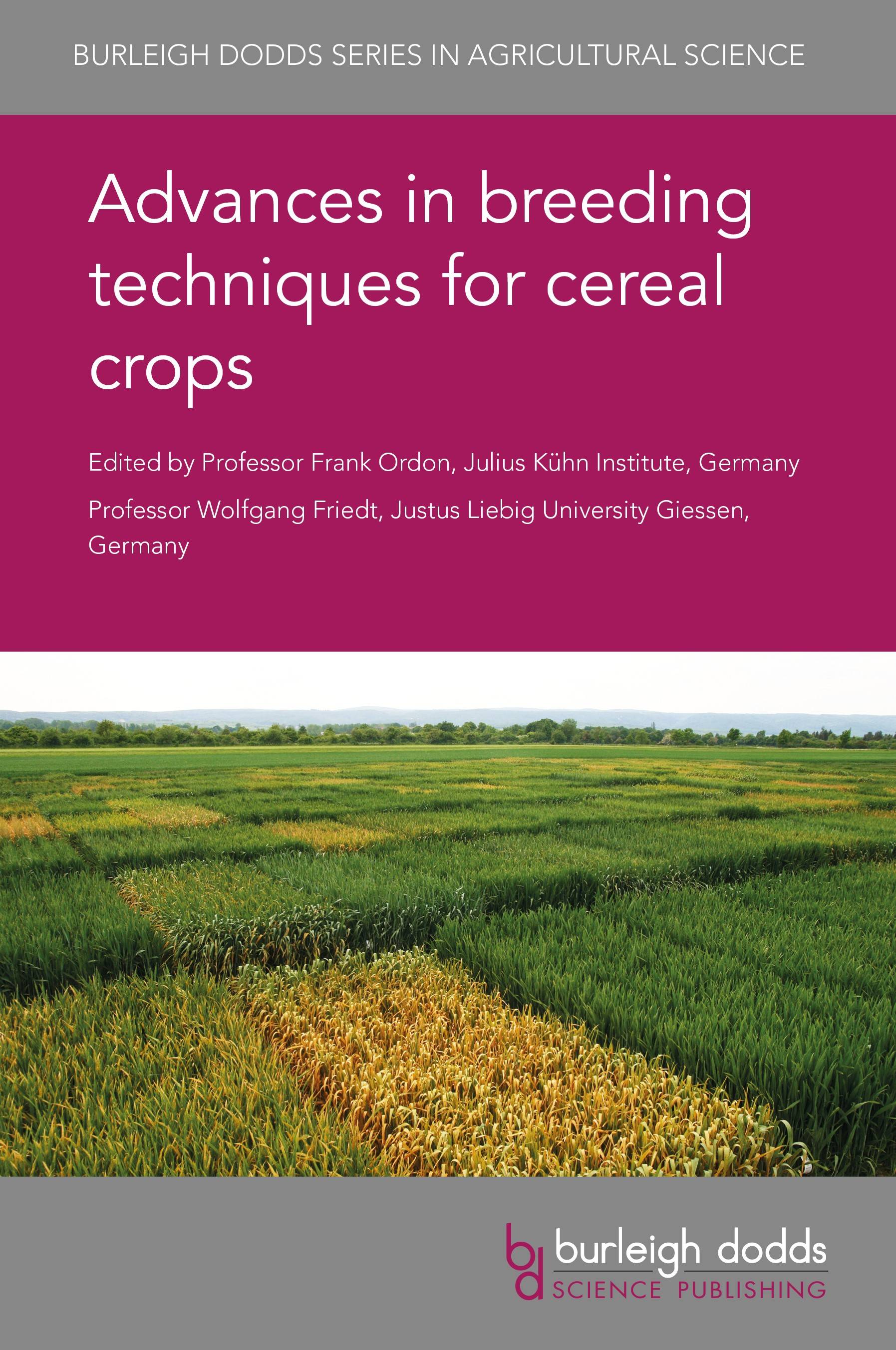Please sign in so that we can notify you about a reply
Editors
Wolfgang Friedt is Professor Emeritus of Plant Breeding at the Justus Liebig-University of Giessen (Germany), where he has taught crop science, plant genetics and breeding. He has published widely on the genetic basis of important traits determining disease resistance, yield and quality of crop plants including cereals. Professor Friedt serves on the editorial board of two scientific journals. He is also chair or member of scientific boards for various professional organisations, including the Science Board of the Wheat Initiative.
Description
This book provides a comprehensive review of advances in breeding techniques for cereals such as wheat, barley maize and rye.
Part 1 discusses ways of better exploiting genetic diversity through techniques such as trait introgression. Parts 2-3 then summarise developments in the use of doubled haploids and hybrid breeding methods. Parts 4-5 review advances in high throughput phenotyping and its use in identifying markers for breeding using techniques such as genome-wide association studies and nested association mapping.
Key features
- Assesses performance of conventional techniques such as backcross and hybrid breeding in introducing new traits
- Maps current progress in methods to identify quantitative trait loci (QTL) linking phenotypic traits with genetic information for selection
- Shows comparative strengths and weaknesses of marker-assisted selection (MAS) techniques such as genome wide association studies (GWAS) and nested association mapping (NAM)
What others are saying...
“This book provides an excellent resource since it brings together leading experts in both the development and application of new technologies. It provides the reader with an authoritative explanation of the technologies and a critical assessment of their implementation in cereal improvement.”
Professor Peter Langridge, University of Adelaide, Australia; Chair of the Scientific Board of the Wheat Initiative
Table of contents
Part 1 Exploiting genetic diversity
1.Alien introgression and breeding of synthetic wheat: Wei Zhang and Xiwen Cai, North Dakota State University, USA;
2.Use of the secondary gene pool of barley in breeding improved varieties: Matthew Haas, Leibniz Institute of Plant Genetics and Crop Plant Research (IPK), Germany; and Martin Mascher, Leibniz Institute of Plant Genetics and Crop Plant Research (IPK) and German Center for Integrative Biodiversity Research, Germany;
3.Marker-assisted trait introgression for wheat breeding & research: Miguel Sanchez-Garcia, International Center for Agricultural Research in the Dry Areas (ICARDA), Morocco; and Alison Bentley, The John Bingham Laboratory, NIAB, UK;
Part 2 Double haploids
4.Doubled haploid production in wheat: W. Tadesse, M. Sanchez-Garcia, S. Tawkaz and M. Baum, International Center for Agricultural Research in the Dry Areas (ICARDA), Morocco;
5.Doubled haploid (DH) production for barley: Benjamin Wittkop, Justus Liebig University Giessen, Germany; László Csélènyi, Saatzucht W. von Borries-Eckendorf, Germany;
6.Production of doubled haploid lines for hybrid breeding in maize: Willem S. Molenaar and Albrecht E. Melchinger, University of Hohenheim, Germany;
Part 3 Hybrid breeding
7.Prerequisites, procedures and potential of hybrid breeding in wheat: Philipp H. G. Boeven and C. Friedrich H. Longin, University of Hohenheim, Germany;
8.Challenges and developments in hybrid breeding in barley: Timm Bernhard, Wolfgang Friedt and Benjamin Wittkop, Justus Liebig University Giessen, Germany;
9.Selection strategies in hybrid rye with special consideration of fungal disease resistances: Thomas Miedaner, University of Hohenheim, Germany; and Peer Wilde, KWS Lochow GmbH, Germany;
Part 4 High throughput phenotyping, genetic markers and QTL mapping
10.Non-invasive field phenotyping of cereal development: Andreas Hund, Lukas Kronenberg and Jonas Anderegg, ETH Zurich, Switzerland; Kang Yu, KU Leuven, Belgium; and Achim Walter, ETH Zurich, Switzerland;
11.Theory and application of phenotyping in wheat for different target environments: Matthew Reynolds and Francisco Pinto, International Maize and Wheat Improvement Centre (CIMMYT), Mexico;
12.Development of single nucleotide polymorphism (SNP) markers for cereal breeding and crop research: current methods and future prospects: Carly Schramm, Yuri Shavrukov and Peter Anderson, Flinders University, Australia; and Akhylbek Kurishbaev and Satyvaldy Jatayev, S. Seifullin Kazakh AgroTechnical University, Kazahkstan;
13.Mapping and isolation of major resistance genes in cereals: Jan Bettgenhauser and Simon G. Krattinger, King Abdullah University of Science and Technology, Saudi Arabia;
14.Leveraging the QTLome to enhance climate change resilience in cereals: Roberto Tuberosa, Marco Maccaferri and Silvio Salvi, University of Bologna, Italy;
15.Advances in statistical methods to handle large data sets for genome-wide association mapping in crop breeding: Boby Mathew, University of Bonn, Germany; Mikko J. Sillanpää, University of Oulu, Finland; and Jens Léon, University of Bonn, Germany;
16.Nested association mapping in barley to identify extractable trait genes: Andreas Maurer and Klaus Pillen, Martin-Luther-University Halle Wittenberg, Germany;
Part 5 Genome-wide association studies and genomic selection
17.Genome-wide association studies (GWAS) in wheat: Susanne Dreisigacker, International Maize and Wheat Improvement Center (CIMMYT), Mexico;
18.Genome-wide association studies (GWAS) in barley: Ernesto Igartua, Carlos P. Cantalapiedra and Ana M. Casas, Consejo Superior de Investigaciones Científicas (CSIC), Spain;
19.Genomic prediction in cereals: advantages and drawbacks: Patrick Thorwarth, University of Hohenheim, Germany;
20.Site-directed genome modification in barley and wheat: Jochen Kumlehn, Stefan Hiekel and Nagaveni Budhagatapalli, Leibniz Institute of Plant Genetics and Crop Plant Research (IPK), Germany
Dimensions:
229x152mm 6x9"
Publication date:
28 June 2019
Length of book:
612 pages



